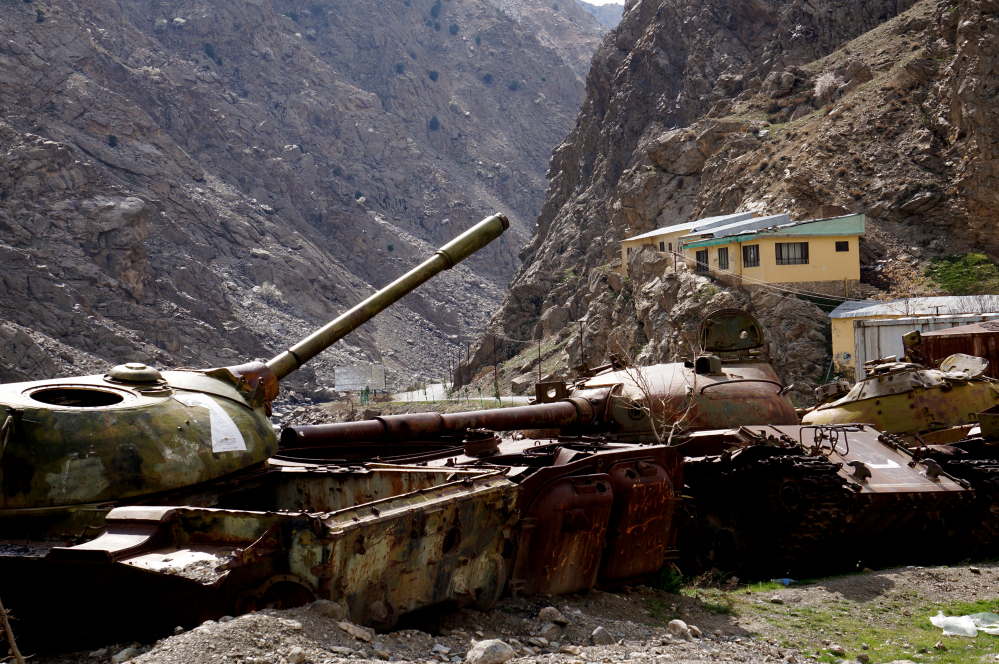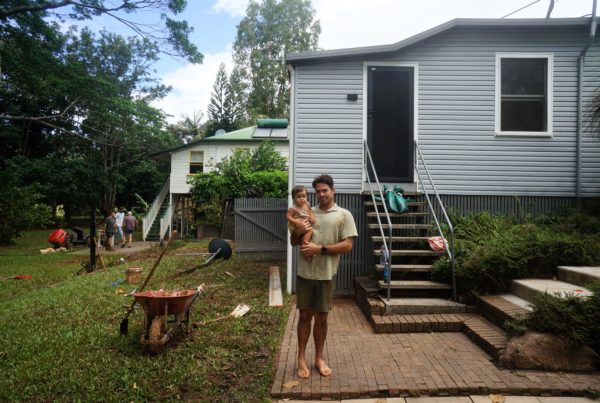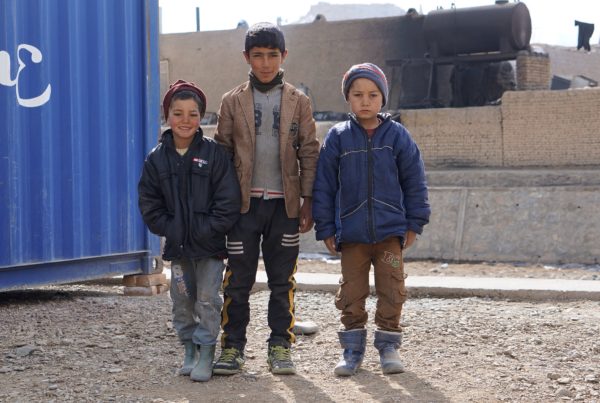The following chapter is an edited extract from the Responsibility to Protect report published by the Edmund Rice Centre in July 2017. The report is a continuation of ERC’s determination to investigate Australia’s most recent deportations to Afghanistan and is available for free download.
After the withdrawal of the U.S.-led coalition forces and the transition of the international forces from a combat role to an advisory and training mission, the Taliban have mounted and sustained its toughest military campaign in years, and the war has become bloodier than ever. Despite the Taliban’s recent internal difficulties, their military energy shows no signs of waning, and they have successfully achieved important tactical and even strategic victories in the past two years. Although the beginning of the fighting season in 2016 seemed to have demonstrated a certain weakness in the coordination between different Taliban commanders in the south of the country, they have managed to increase their influence across the country, resulting in the deterioration of the security situation.
In 2016, the number of armed clashes between the ANSF and the Taliban and other armed opposition groups increased by 10-13 percent, and losses sustained by the ANSF has increased by 10 percent compared with 2015. Between May and July 2016, the number of armed clashes increased by 14.7 percent as compared with the three previous months, and was 24 percent higher than during the same period in 2015. According to a recent report of the United Nations General Assembly (UNGA), the security situation in Afghanistan has remained highly volatile as intensive Taliban operations have continued throughout 2016 and armed clashes have occurred at consistently high levels. The most recent armed conflict has taken place in Baghlan, Kunduz and Takhar provinces in the north-eastern region, Faryab and Jawzjan provinces in the northern region and Helmand, Kandahar and Uruzgan provinces in the southern region of Afghanistan. The Taliban have focused their operations in challenging the Afghan government’s control by attempting to capture district administrative and provincial centres and cutting key supply routes of the targeted areas.
The further deterioration of the security situation in Afghanistan is the continuation of the violent conflict in 2015. In 2015, 31 out of 34 provinces of the country were affected by conflict, resulting in the forcible displacement of thousands of Afghan families. While the Taliban had promised that the withdrawal of international troops would bring less fighting, it seems this has actually led to the intensification of conflict as Taliban forces gain further confidence. The Taliban also appear to be on the verge of taking over Helmand province in the south, which would give them control over a large portion of the drug trade. Recent estimates suggest that one-fifth of the country is controlled or contested by the Taliban. Bill Roggio, the editor of The Long War Journal, confirms that about one-fifth of the Afghan territory is controlled or contested by the Taliban, but he emphasises that this is a conservative estimate as the Taliban probably either control or heavily influence about a half of the country.
Musa Mahmoodi, Executive Director of AIHRC, refers to the Afghan conflict as “the continuous war of everywhere,” which may provide a better understanding of how the people feel about the conflict. Moreover, Tom Shackles, Operations Director and Deputy Executive Director of IAM in Afghanistan, believes that “the armed opposition groups are now acting as military forces rather than terrorist forces as in the past”. Shackles stresses that “while the Taliban were terrorist in nature in the past, there’s now a change where there’s a significant increase in the number of incidents that look like conventional warfare as they have started to seize and hold ground.” According to AAN, the single biggest factor affecting the Afghan conflict in 2015 was the almost complete absence of international forces on the battlefield, giving the Taliban the confidence to try to capture administrative centres and provincial capital cities in ways not seen for the past one and a half decades.
Many experts including Alexey Yusupov, Country Director of FES in Afghanistan, believe that the current limited military involvement of the U.S. and allies is not enough to secure peace or stability, and will only maintain an uncomfortable stalemate.
Between 1 January and 30 September 2016, the UNAMA documented 8,397 conflict-related civilian casualties (2,562 deaths and 5,835 injured). There has been an increase in civilian casualties, which is a strong case for Afghan refugees’ eligibility for complementary protection under generalised violence criteria of the Refugee Convention. According to the UNAMA, both 2015 and 2016 were the worst years for civilian casualties in the Afghan conflict since the organisation started systematically documenting casualties in 2009. Suicide bombings, improvised explosive devices, and targeted attacks by the Taliban and other insurgents have caused 70 percent of all civilian casualties.
In the first nine months of 2016, the UNAMA documented 2,461 child casualties (639 deaths and 1,822 injured), a 15 percent increase compared with the same period in 2015. Similarly, there was a 37 percent increase in women casualties (333 deaths; 913 injured), and a 14 percent increase in child casualties (733 deaths; 2,096 injured), compared to 2014. In the first quarter of 2016, the UNAMA reported at least 600 civilians were killed and 1,343 others were wounded, a five percent increase in women casualties and a 29 percent increase in child casualties compared to the first three months of 2015. In addition, the UNAMA reports that the Taliban offensive in Kunduz in September and October 2015 killed at least 289 civilians and wounded 559 others, including 67 people killed and injured during a U.S. air strike on a hospital run by Medecins Sans Frontieres.
In the meantime, there have been numerous terrorist attacks in major cities including Kabul, which the Australian and many other Western governments consider a “safe zone”. Kabul remains a high-profile target for large-scale insurgent attacks, as successful operations tend to warrant greater media coverage. There were 249 significant attacks in Kabul in 2015, an increase of 29 percent over the 193 attacks in 2014. In 2016, Kabul has witnessed more terrorist attacks than the previous years.
The intensification of conflict has produced anxiety among the people of Afghanistan and there is a significant perception of risk. ERC researchers were restricted from travelling to most parts of Afghanistan due to the conflict and insecurity. To give a more realistic picture of the security situation, the ANSF in Kabul sit in the back of their armoured fighting vehicles, carrying guns, rocket launchers and protective battle equipment. Helicopters frequently fly overhead to observe the movement of suspicious people in the city. Even supermarkets and shopping centres are protected by heavily-armed security guards. There is a military zone in the city known as the “ring of steel” to protect targets of terrorism such as embassies, international development organisations and government buildings. The ANSF perform comprehensive checks of vehicles when people try to enter the zone.
Tom Shackles states that IAM staff are anxious about moving around the city in a way he has never seen before. According to the 2015 report of The Asia Foundation (TAF) “A Survey of the Afghan People”, the proportion of Afghans who fear for their personal safety is at the highest point in the past decade. A local staff member of ICRC in Afghanistan who works in 12 provinces, many of which are affected by conflict and insecurity, states that “everyone in the country [has] stress, and are not very focused on their objective of life as it is also a problem with the war coming.” That same staff member tells the story of a man from a village who was captured by the Taliban and accused of being pro-government: “The person was killed, beheaded and cut into different parts. It is not only one case. It is also the reality of the country.”
There is also anxiety about what is to come in the next years. With conflict becoming more intense throughout the country, many people are concerned that their homes could be next. Interviewee M, a returnee from Australia to Afghanistan, says: “If you [are] in this situation, it scares you. You don’t feel safe here. You don’t know what will happen because everything is getting worse in this country.” The interviewee further adds: “You can see reports from the UN or the UNHCR. It’s getting worse, day by day. You don’t feel safe in this country. If you go out of Kabul, you don’t know what will happen to you because if Taliban come and stop your bus, if they come into the bus, if they ask: Are you working for the government? If you say no, can you convince them you are not working for the government? You don’t know. Can you convince them to not kill you? I don’t know what else I can say.”



